Deaths
which occurred on a 01 December:
^top^
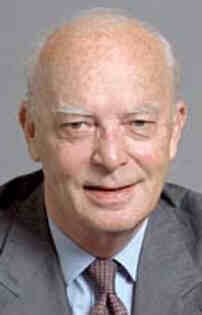 2002::
47 of a crowd of some 10'000, mostly poor women, some with children, crushed
in stampede in Gaibandha, Bangladesh, when, after waiting for hours,
it surged through the gates of an abandoned jute mill when they were opened
for the distribution of free saris by a local businessman ahead of the Islamic
Eid ul Fitr festival, which marks the end of the month of Ramadan (in 2002
the last day of Ramadan is 04 December). Eid is an Arabic word derived from
root of a-w-d; literally it means a recurring event. In Islam it denotes
the festivals of Islam. Fitr means to break and it therefore marks the breaking
of the fasting period and of all evil habits. Happiness is observed at attaining
spiritual upliftment after a month of fasting. 2002::
47 of a crowd of some 10'000, mostly poor women, some with children, crushed
in stampede in Gaibandha, Bangladesh, when, after waiting for hours,
it surged through the gates of an abandoned jute mill when they were opened
for the distribution of free saris by a local businessman ahead of the Islamic
Eid ul Fitr festival, which marks the end of the month of Ramadan (in 2002
the last day of Ramadan is 04 December). Eid is an Arabic word derived from
root of a-w-d; literally it means a recurring event. In Islam it denotes
the festivals of Islam. Fitr means to break and it therefore marks the breaking
of the fasting period and of all evil habits. Happiness is observed at attaining
spiritual upliftment after a month of fasting.
2002 Edward
Latimer Beach Jr., of cancer. Born on 20 April 1918 in New
York City, he became a US Navy captain (like his father) and commanded the
nuclear-powered submarine Triton when it made history's first round-the-world
undersea voyage (49'420 km from 16 Feb to 10 May 1960). Author of Submarine!
(1952, history of. undersea warfare against Japan in WW2), war novel Run
Silent, Run Deep (1955), Around the World Submerged (1962),
The Wreck of the ‘Memphis’ (1966, cruiser commanded
by his father, hit in August 1916 by a tidal wave which killed 43 crewmen),
Keepers of the Sea (1983, illustrated account of the modern US
Navy), and The United States Navy: 200 Years (1986).
2002
Pierre Peugeot [photo >], born on 11 June 1932,
a great-grandnephew of Armand Peugeot, who, continuing a
family enterprise (started by Jean-Pierre Peugeot in the 18th century)
that had manufactured, among many other things, coffee grinders, in 1885
founded a bicycle shop that would later make cars also. Pierre Peugeot was
a leading executive of the Peugeot company, 28% owned by the family, which
acquired Citroën in 1976 and Chrysler France in 1978, and is now PSA-Peugeot-Citroën.
2001 Yoni Korganov, 20; Elasha Yosef, 18; Yedidi Levy Moshe, 19;
Golan Torgeman, 15; Asaf Avitan, 15; Srgt. Nir Chaftzadi, 19; Michael Moshe
Dahan, 20;, Adam Weistein, 14; Guy Vaknin, 19 and Israel Ya'akov Daneinu,
17, and two suicide bombers (from Abu Dis, east of Jerusalem) in
almost simultaneous explosions 40 m apart in the Ben Yehuda mall in dowtown
Jerusalem, at 23:30. More than 180 persons are injured, of which Ido Cohen,
17, would die on 08 December 2001. Most of those killed were residents of
Jerusalem.
1988 596 dead from cyclone
in Bangladesh, half a million homeless
1985 Philip Larkin English poet
1987 James A Baldwin, 63, writer (Another Country)
1983 Mirsky,
mathematician.
1973 David Ben-Gurion, 87, founding father and first prime
minister of Israel, in Tel Aviv
1948 Francis Gruber, French artist born on 14 March 1912.
— more with links
to images.
1947 G.
H. Hardy, mathematician.
1939 Day 2 of Winter War: USSR
aggression against Finland. [Talvisodan
2. päivä]
Jorma Gallen-Kallela and many other Finns and Soviets die because
of Stalin's treachery Akseli Gallen-Kallela's
son, Lieutenant Jorma Gallen-Kallela falls saving the life of Captain
Adolf Ehrnrooth.
07.30: Soviet aircraft strike at villages on Suursaari. The Russians
bomb Helsinki, Lahti, Kirkkonummi, Loviisa, Kotka, Hamina, Kouvola,
Antrea, Hiitola, Jääski, Immola, Tainionkoski and targets in and
around Viipuri.
Supported by two destroyers, the Soviet cruiser Kirov attacks
Russarö Fortress. There is an exchange of artillery fire in the
late morning. Both Kirov and one of the destroyers are damaged.
President Kyösti Kallio appoints the new Government under Prime
Minister Risto Ryti. Väinö Tanner, Minister of Finance in the previous
administration, becomes Foreign Minister.The Government announces
its prime target to be the restoration of peaceful relations with
the Soviet Union.
The Finnish covering forces on the Isthmus withdraw to their
first delaying position. Finland records its first successes in
the air war: Finnish fighters shoot down 13 Soviet aircraft, two
over Helsinki. The crew of a Soviet aircraft shot down near Uusikirkko
take refuge in barn. A Finnish patrol sets out to capture them.
Terijoki: Traitor Otto Wille Kuusinen's so-called 'Finnish People's
Government' issues its first proclamation. |
1935 Bernard Schmidt inventor
(Schmidt camera)
1934 Sergey Mironovich (Kostrikov)
Kirov, 48, assassinated at the Communist Party headquarters
in Leningrad by a youthful party member, Leonid Nikolayev. Nikolayev
and 13 alleged accomplices were shot. Subsequently, Stalin claimed
to have discovered a widespread conspiracy of anti-Stalinist Communists
who were planning to assassinate the entire Soviet leadership; he
used that as a pretext to bolster his power by ordering purge trials,
executing many Bolshevik leaders and party members and hundreds of
Leningrad citizens and sending thousands more to forced-labor camps
for their alleged complicity in the plot. Later, Nikita Khrushchev
in his “secret speech” (25 Feb 1956) strongly implied that
Stalin himself engineered Kirov's assassination.
Sergey
Kirov, a leader of the Russian Revolution and high-ranking member
of the Politburo, is shot to death at his Leningrad office by Communist
Party member Leonid Nikolayev, likely at the instigation of Soviet
leader Joseph Stalin. Whatever Stalin's precise role in the assassination
of his political rival Kirov, he uses the murder as a pretext for
eliminating many of his opponents in the Communist Party, the government,
the armed forces, and the intelligentsia. Kirov's assassination serves
as the basis for seven separate trials and the arrest and execution
of hundreds of notable figures in Soviet political, military, and
cultural life. Each trial contradicts the others in fundamental details,
and different individuals are found guilty of organizing the murder
of Kirov by different means and for different political motives. The
Kirov assassination trials marks the beginning of Stalin's massive
four-year purge of Soviet society, in which several hundred thousand
people are imprisoned, exiled, or killed. |
1884 One of 80 murderous cowboys,
killed by attacked Chicano deputy
Elfego Baca, legendary defender of southwestern Hispanos, manages
to hold off a gang of 80 cowboys who are determined to kill him.
The trouble began the previous day,
when Baca arrested Charles McCarthy, a cowboy who fired five shots
at him in a Frisco (now Reserve), New Mexico, saloon. For months,
a vicious band of Texan cowboys had terrorized the Hispanos of Frisco,
brutally castrating one young Mexican man and using another for target
practice. Outraged by these abuses, Baca gained a commission as deputy
sheriff to try to end the terror. His arrest of McCarthy served notice
to other Anglo cowboys that further abuses of the Hispanos would not
be tolerated.
The Texans, however,
were not easily intimidated. The morning after McCarthy's arrest,
a group of about 80 cowboys rode into town to free McCarthy and make
an example of Baca for all Mexicans. Baca gathered the women and children
of the town in a church for their safety and prepared to make a stand.
When he saw how outnumbered he was, Baca retreated to an adobe house,
where he killed one attacker and wounded several others. The irate
cowboys peppered Baca's tiny hideout with bullets, firing about 400
rounds into the flimsy structure. As night fell, they assumed they
had killed the defiant deputy sheriff, but the next morning they awoke
to the smell of beef stew and tortillas--Baca was fixing his breakfast.
A short while later, two lawmen
and several of Baca's friends came to his aid, and the cowboys retreated.
Baca turned himself over to the officers, and he was charged with
the murder of one of the cowboys. In his trial in Albuquerque, the
jury found Baca not guilty because he had acted in self-defense, and
he was released to a hero's welcome among the Hispanos of New Mexico.
Baca was adored because he had taken a stand against the abusive and
racist Anglo newcomers. Hugely popular, Baca later enjoyed a successful
career as a lawyer, private detective, and politician in Albuquerque.
|
|
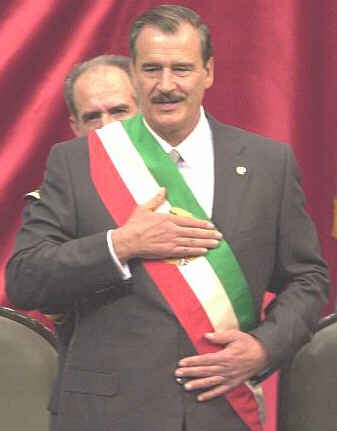 On
a 01 December:
On
a 01 December: 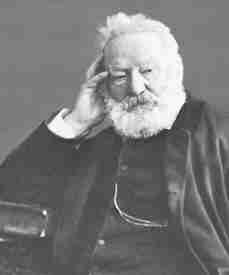 1830
1830
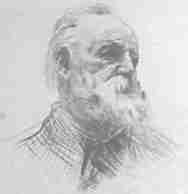 In 1823, Hugo published his first novel,
In 1823, Hugo published his first novel,  2002::
47 of a crowd of some 10'000, mostly poor women, some with children, crushed
in stampede in Gaibandha, Bangladesh, when, after waiting for hours,
it surged through the gates of an abandoned jute mill when they were opened
for the distribution of free saris by a local businessman ahead of the Islamic
Eid ul Fitr festival, which marks the end of the month of Ramadan (in 2002
the last day of Ramadan is 04 December). Eid is an Arabic word derived from
root of a-w-d; literally it means a recurring event. In Islam it denotes
the festivals of Islam. Fitr means to break and it therefore marks the breaking
of the fasting period and of all evil habits. Happiness is observed at attaining
spiritual upliftment after a month of fasting.
2002::
47 of a crowd of some 10'000, mostly poor women, some with children, crushed
in stampede in Gaibandha, Bangladesh, when, after waiting for hours,
it surged through the gates of an abandoned jute mill when they were opened
for the distribution of free saris by a local businessman ahead of the Islamic
Eid ul Fitr festival, which marks the end of the month of Ramadan (in 2002
the last day of Ramadan is 04 December). Eid is an Arabic word derived from
root of a-w-d; literally it means a recurring event. In Islam it denotes
the festivals of Islam. Fitr means to break and it therefore marks the breaking
of the fasting period and of all evil habits. Happiness is observed at attaining
spiritual upliftment after a month of fasting. 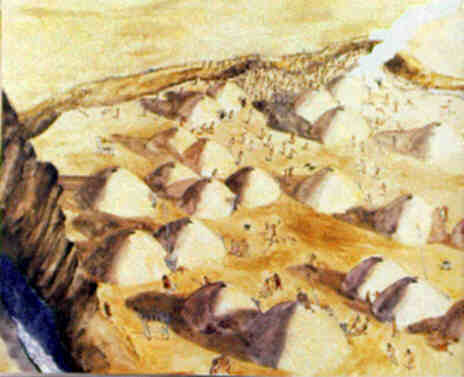 1325
(approximation to the unknown year and date) Some
500 victims of the
1325
(approximation to the unknown year and date) Some
500 victims of the